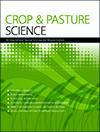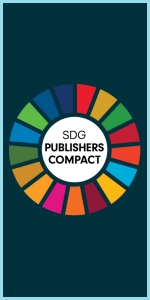Wheat phenology plays a crucial role in its adaptation to different environments. This study focused on identifying the genetic bases of phenological traits to assess potential quantitative trait loci and discover genes that contribute to phenological stages. These findings provide valuable insights into the genetic bases of phenological characteristics in a diverse Iranian wheat varieties and landraces. These genes and pathways could be applied in future breeding programs unlock molecular response against wheat adaptation and selection of suitable genotypes.

Crop & Pasture Science
Volume 76 Number 7 2025
Dryland agricultural systems present substantial challenges and opportunities for the management of soil organic matter (SOM). Although of typically low SOM concentrations, the vast areas covered present substantial opportunity because of their scale. This review addresses management practices that may affect SOM, and the benefits and potential costs of these opportunities.
CP24257 Abstract | CP24257 Full Text | CP24257PDF (2.3 MB) Open Access Article
Alternaria leaf blight (ALB) or brown spot is a fungal disease that causes major losses in mustard crops worldwide. Mustard crop resistance to ALB caused by Alternaria brassicae was investigated by evaluating 261 germplasm lines for defensive responses and identifying candidate genes linked to resistance. These findings provide a foundation for breeding strategies, such as gene pyramiding and interspecific hybridization, that can better withstand the disease, using techniques such as crossbreeding and gene selection to help farmers protect their crops and ensure stable yields.
Herbicide resistant weeds are a major threat to crop production, with the broadleaf species wild radish (Raphanus raphanistrum), sowthistle (Sonchus oleraceus), and Indian hedge mustard (Sisymbrium orientale) being of concern in Australia. Surveys of south-eastern Australia conducted over a 5-year period found significant levels of resistance to Group 2 sulfonylurea herbicides with 66% of sowthistle, 34% of Indian hedge mustard and 16% wild radish populations resistant to this group. Lower levels of resistance were found to four other herbicide groups
CP25041 Abstract | CP25041 Full Text | CP25041PDF (640 KB) Open Access Article
This viewpoint critiques four papers that presented positive conclusions regarding the efficacy of a range of biostimulants to mitigate the effects of pasture dieback in Queensland, Australia. We argue that many methods used were inappropriate or poorly described, the statistical analyses are largely invalid, and the conclusions drawn do not align with the data presented. We conclude the four publications do not present any compelling evidence for any agronomic benefits of the biostimulants tested, and the authors’ conclusions are over-optimistic and misleading.
CP25059 Abstract | CP25059 Full Text | CP25059PDF (534 KB) | CP25059Corrigendum (110 KB) Open Access Article




